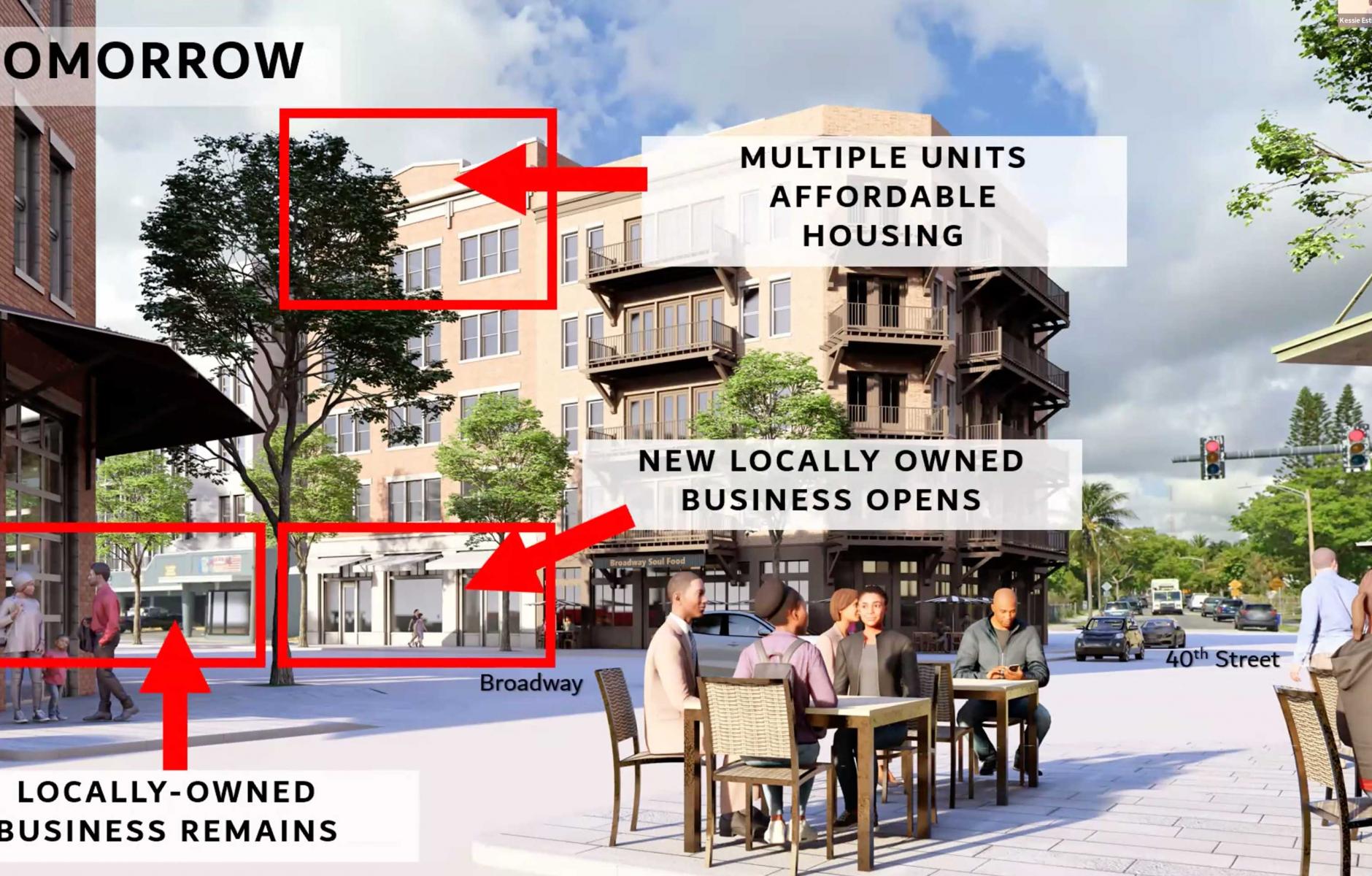
A toolbox for equitable planning
Equity planning is inclusion and shared success, explains Jason King of Dover, Kohl & Partners (DKP), author of The Equity Planner: Five Tools to Facilitate Economic Development with Just Outcomes.
DKP principal King, DKP urban planner Kessie Estil, and Diana Pena, co-founder of Able City, presented a CNU On the Park Bench webinar moderated by Lauren Mayer.
The book features 50 case studies and offers a toolkit for equitable planning. The author describes four attributes of an equitable plan: courage, intelligence, vitality, and sensitivity. Courage involves boldly drawing new public spaces and streets. Intelligence speaks to knowing what will make a community better or worse. Vitality means presenting a plan with excitement and energy.
Those three characteristics have long been part of new urbanist planning. “When your plan has enough courage, intelligence, and vitality, there are going to be people who suffer adverse impacts,” King says about those hurt as land values rise. “Sensitivity is how you communicate with them and find a way to be more inclusive.”
The Equity Planner's case studies go back to 1990, when DPZ (Duany Plater-Zyberk) planned the revitalization of downtown Providence, Rhode Island. King notes that the plan focused on artists, many of whom were part of the marginalized gay and lesbian community. They were given a major role in the plan and revitalization, which was unusual at the time.
In El Paso, DKP drafted Plan El Paso, which established a blueprint for citywide transit-oriented development (TOD) around an extensive new bus rapid transit system. In an economically struggling border town, “they are slowly building the city one TOD at a time. Because it’s inclusive, people are still cheering on the planning.”
Estil, who focuses on equity planning for DKP, presented the Broadway Avenue form-based code corridor in West Palm Beach, Florida. Unlike the wealthy Palm Beach to the east, West Palm is diverse and not particularly wealthy. Broadway is a primary commercial corridor that goes on for several miles, but it is riddled with vacant and underutilized properties. Like most form-based codes (FBCs), this project allows a transformation into a mixed-use, walkable, urban place.

The Broadway FBC offers developers up to three extra floors for including workforce housing from 60-80 percent and 80-100 percent of area median income (AMI). The incentives also apply to including locally owned commercial space. The planners originally proposed incentivizing community social services (e.g., child care, health, drug treatment), but the city rejected that idea because the corridor already includes abundant social services.
Other case studies were presented in the webinar, including a plan for the City of Lewiston, Maine, by Town Planning and Urban Design Collaborative. The city revitalized downtown by “welcoming a Somali Bantu population,” says King. “This added a large and visible population to downtown. And now Lisbon Street, their main street, is completely revived.”
More such stories are presented, and those are just samples of case studies in the book. See the entire webinar.




